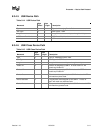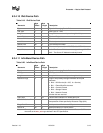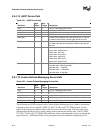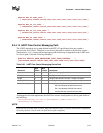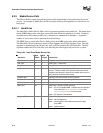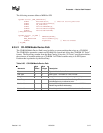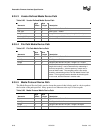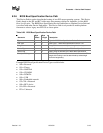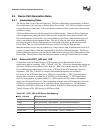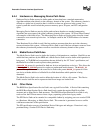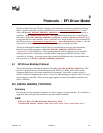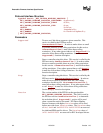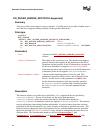
Protocols — Device Path Protocol
Version 1.10 12/01/02 8-19
8.3.6 BIOS Boot Specification Device Path
This Device Path is used to describe the booting of non-EFI-aware operating systems. This Device
Path is based on the IPL and BCV table entry data structures defined in Appendix A of the BIOS
Boot Specification. The BIOS Boot Specification Device Path defines a complete Device Path and
is not used with other Device Path entries. This Device Path is only needed to enable platform
firmware to select a legacy non-EFI OS as a boot option.
Table 8-29. BIOS Boot Specification Device Path
Mnemonic
Byte
Offset
Byte
Length
Description
Type 0 1 Type 5 – BIOS Boot Specification Device Path.
Sub-Type 1 1 Sub-Type 1 – BIOS Boot Specification Version 1.01.
Length 2 2 Length of this structure in bytes. Length is 8 + n bytes.
Device Type 4 2 Device Type as defined by the BIOS Boot Specification.
Status Flag 6 2 Status Flags as defined by the BIOS Boot Specification
Description String 8 n ASCIIZ string that describes the boot device to a user. The
length of this string n can be determined by subtracting 8
from the Length entry.
Example BIOS Boot Specification Device Types would include:
• 00h = Reserved
• 01h = Floppy
• 02h = Hard Disk
• 03h = CD-ROM
• 04h = PCMCIA
• 05h = USB
• 06h = Embedded network
• 07h..7Fh = Reserved
• 80h = BEV device
• 81h..FEh = Reserved
• FFh = Unknown



